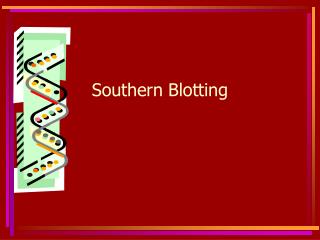

There is clearly no single accepted definition of the term. The method is similar to South-western blotting.
(2009) Eastern blot has been used to describe a blot of proteins on nitrocellulose membrane where the probe is an aptamer rather than an antibody. in that they use lectin probes and other staining reagents. These authors distinguish the method from the Far-eastern blot named by Taki et al. as a technique which probes proteins blotted to PVDF membrane with lectins, cholera toxin and chemical stains to detect glycosylated, lipoylated or phosphorylated proteins. (2009) Eastern blotting has most recently been re-dubbed by Thomas et al. SOUTH EASTERN BLOTTING ACTIVATOR
The name is based on the use of an enzyme activator (EA) as part of the detection. (2006) Eastern blotting has been used to refer to the detection of fusion proteins through complementation.This could be seen as similar to a Southern blot, however the interaction is between a DNA molecule(the aptamer) and a protein, rather than two DNA molecules. (2005) Eastern blot has been used to describe a blot of proteins on PVDF membrane where the probe is an aptamer rather than an antibody.

Since this is essentially a Western blot, the charge reversal was used to dub this method an Eastern blot. (2002) Eastern blot has also been used to describe an immunoblot performed on proteins blotted to a PVDF membrane from a PAGE gel run with opposite polarity.

The method is essentially Far-Eastern blotting. This method has also been discussed in later work by the same group. The membrane is then probed with antibodies for epitopes of interest. The oxidized protein is then treated with a complex mixture, generating a new conjugate on the membrane.
(2001) Eastern blotting was described as a technique for detecting glycoconjugates generated by blotting BSA onto PVDF membranes, followed by periodate treatment. The method is described more fully in the article on Far-eastern blotting, but is based on antibody or lectin staining of lipids transferred to PVDF membranes. (2000) Far-Eastern blotting seems to have been first named in 2000 by Ishikawa & Taki. in 1994, which they originally dubbed TLC blotting, and was based on a similar method introduced by Towbin in 1984. This method is based on earlier work by Taki et al. The method involved blotting of phospholipids on PVDF or nitrocellulose membrane prior to transfer of proteins onto the same nitrocellulose membrane by conventional Western blotting and probing with conformation specific antibodies. (1996) Eastern-Western blot was first used by Bogdanov et al. The immobilized RNA is then probed using DNA. (1984) Middle eastern blotting has been described as a blot of polyA RNA (resolved by agarose) which is then immobilized. (1982) The term eastern blotting was specifically rejected by two separate groups: Reinhart and Malamud referred to a protein blot of a native gel as a native blot Peferoen et al., opted to refer to their method of drawing SDS-gel separated proteins onto nitrocellulose using a vacuum as Vacuum blotting. In some cases, the technique had been in practice for some time before the introduction of the term. The current definitions are summarized below in order of the first use of the name however, all are based on some earlier works.







 0 kommentar(er)
0 kommentar(er)
